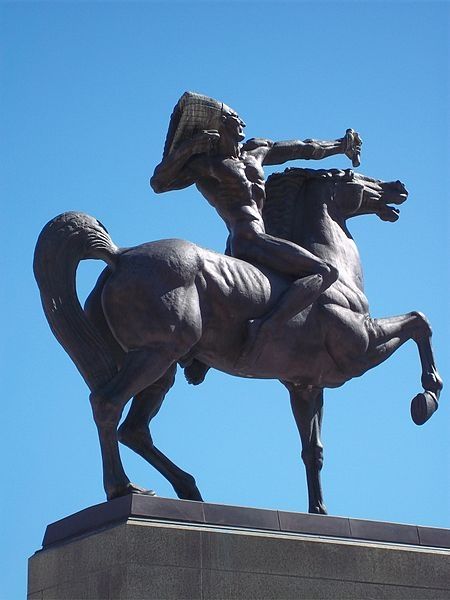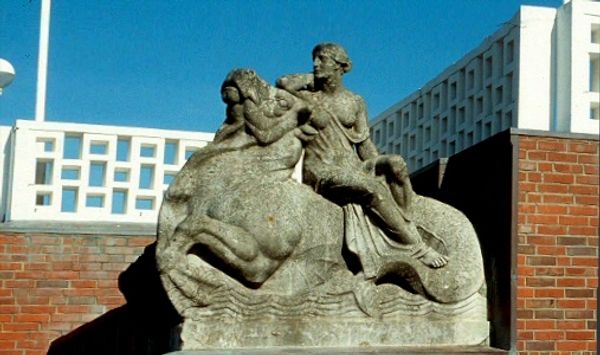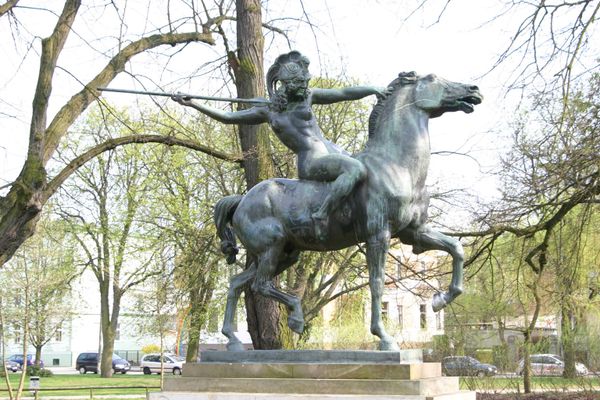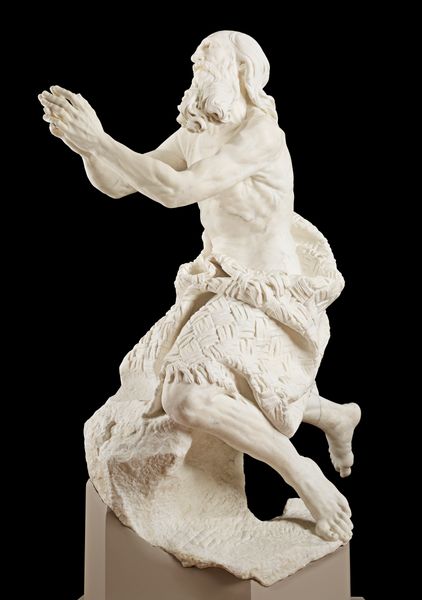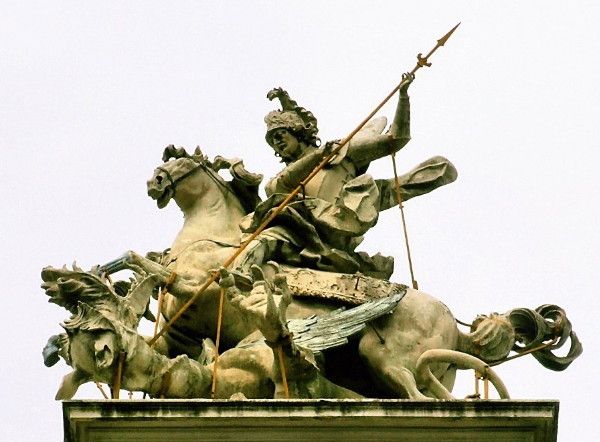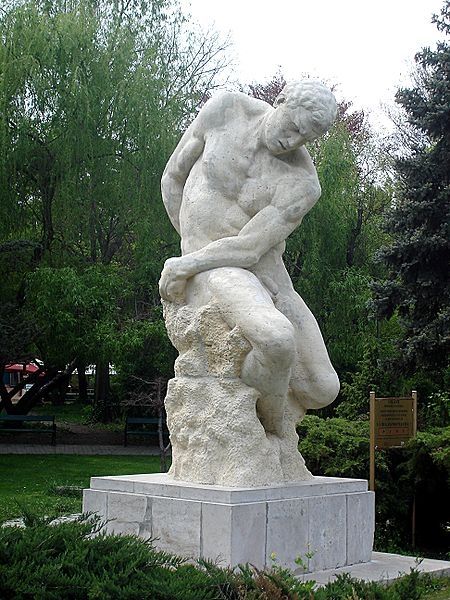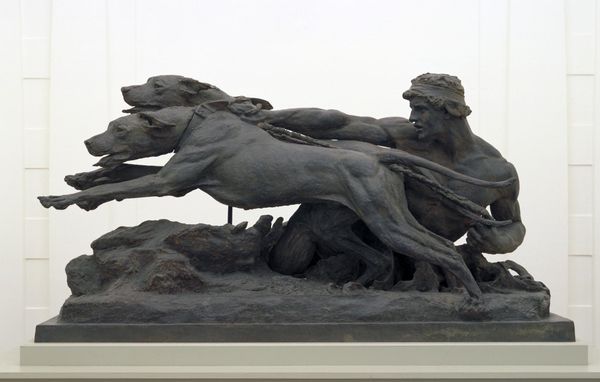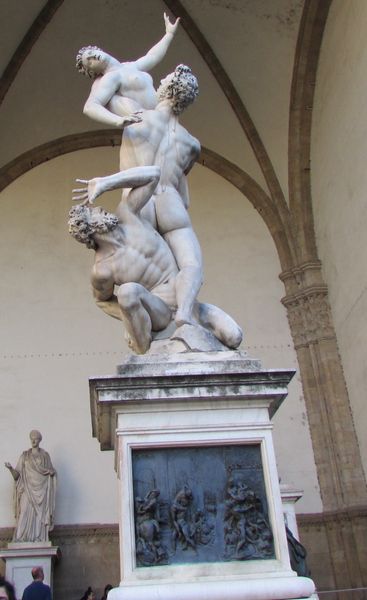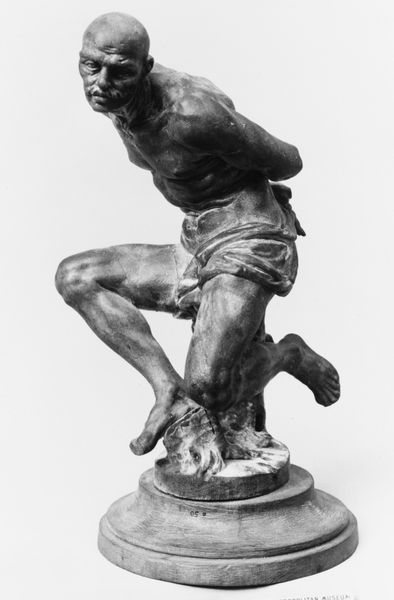
public-art, sculpture, marble
#
public art
#
statue
#
sculpture
#
public-art
#
figuration
#
sculpture
#
marble
#
statue
Copyright: Public domain
Curator: Immediately striking, isn’t it? All muscle and straining form. Editor: It does have a brute force about it, doesn’t it? There’s something about the way the human figure dominates the centaur that makes me a bit uneasy. Curator: Indeed. This marble sculpture titled "Hercules Fighting the Centaur" is by Ludwig Manzel, though unfortunately, it is not dated. It immediately brings to mind traditional heroic narratives. Editor: Mythological imagery, like Hercules, always comes loaded with significance. The centaur, a being of dual nature—half-human, half-animal—often embodies base instincts, irrationality. Hercules subduing the centaur signifies the triumph of reason over animalistic impulse. It's an enduring symbol. Curator: Absolutely. And one has to consider the context in which Manzel would have been working, likely in the early twentieth century, when there were considerable social anxieties regarding order versus chaos, civilization versus savagery, the intellectual versus the physical, reflected in this almost performative domination. Editor: I see it. The choice of marble, a classical material, underscores the high-mindedness of the subject. But doesn't this rendition seem less about an internal struggle for Hercules and more about asserting dominance? It almost leans into propaganda, doesn’t it? Curator: Well, public art serves specific functions. These figures can become ideological. They influence how societies see themselves. It prompts reflection on our values—how society should function. Which behaviors and hierarchies we condone, in short. Editor: Ultimately, that power is the fascinating paradox. We look to ancient myth to understand modern issues, and visual icons can simultaneously reveal enduring truths and shift to mirror, sometimes distort, contemporary anxieties. Curator: Exactly, symbols continue to be re-interpreted as cultural needs change. Editor: Food for thought! Thank you.
Comments
No comments
Be the first to comment and join the conversation on the ultimate creative platform.
